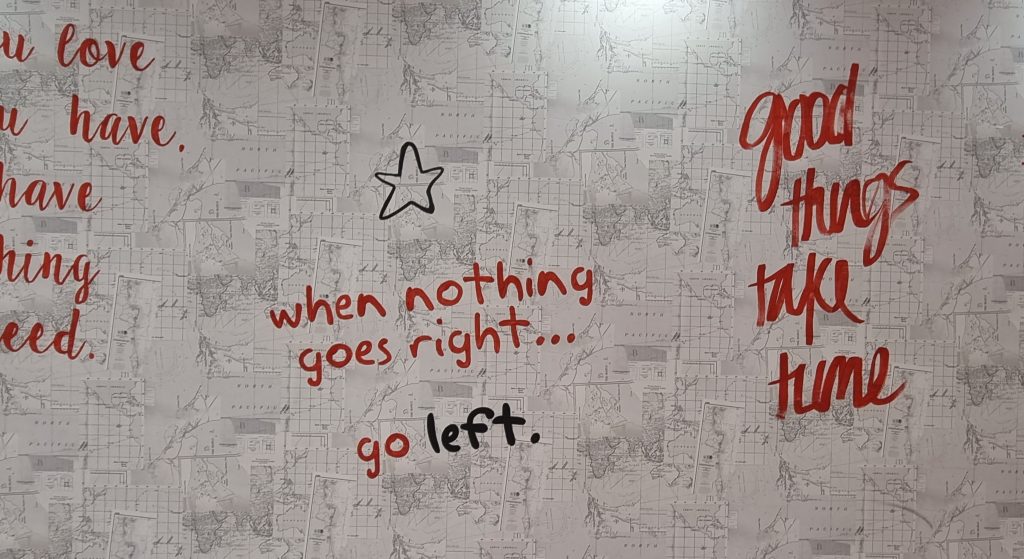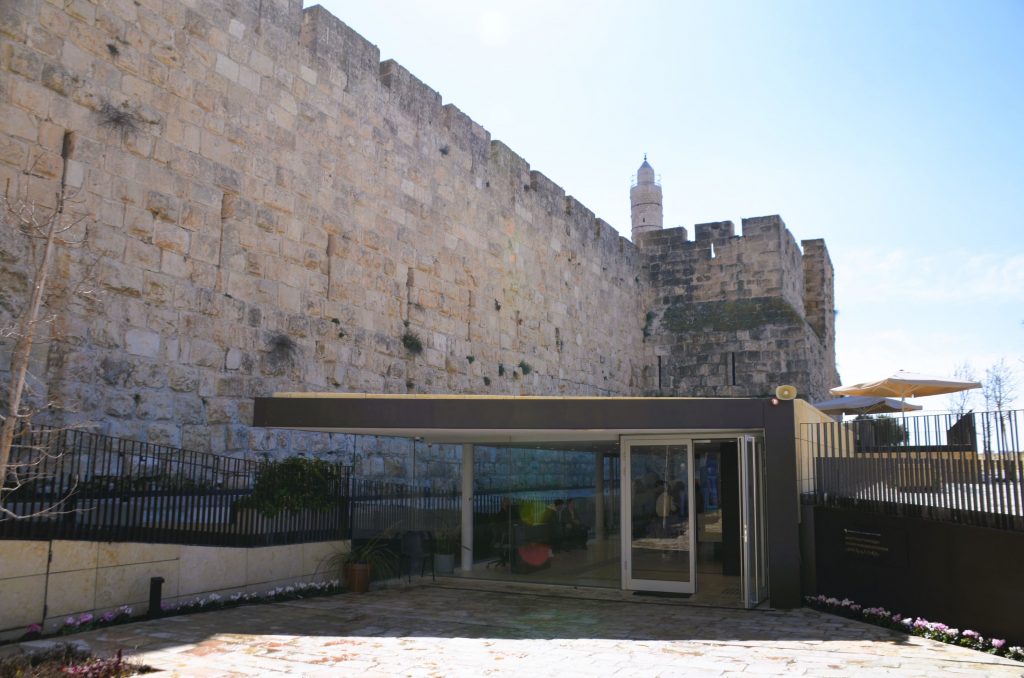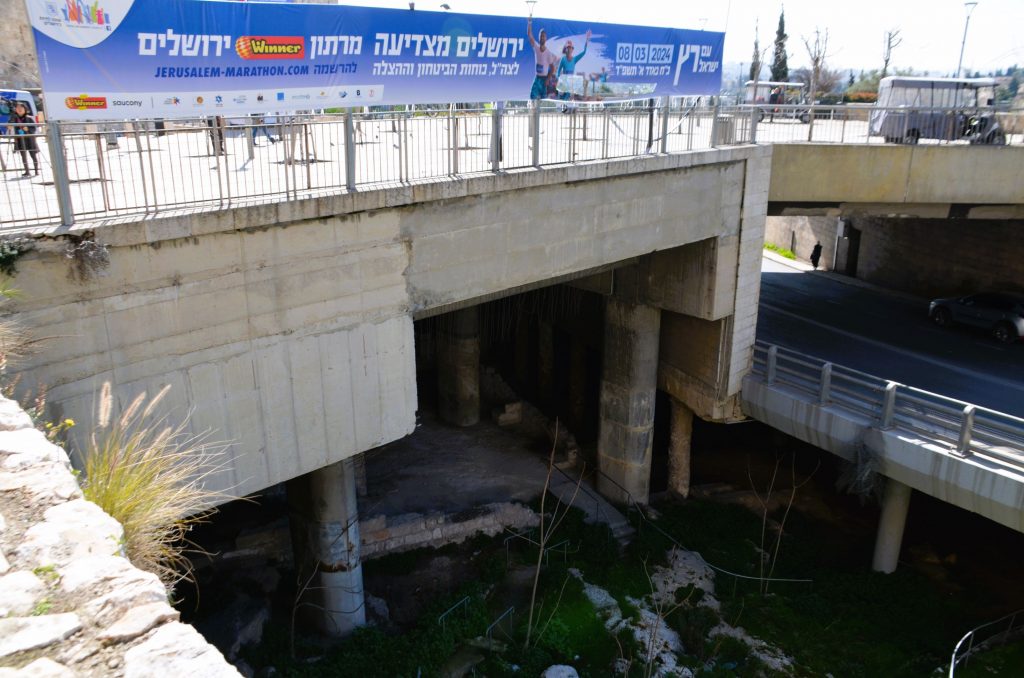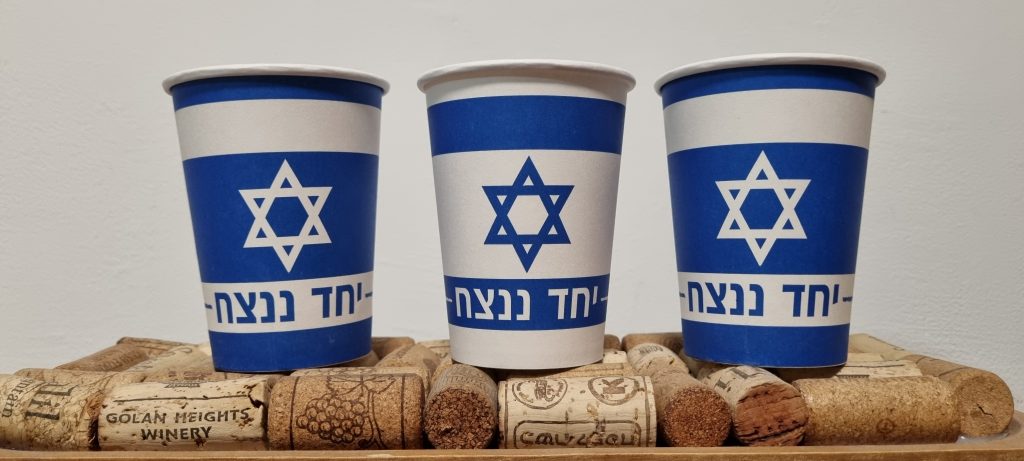In a week when war raged all around, there were still good things happening in Jerusalem, Israel.
We can not predict the future, but in Jerusalem, the past is being preserved and presented in new ways.

Our week began on the Tayelet, with the Old City in view, for a special morning prayer service. Preserving the past through prayer and continuing our tradition with a boy putting on tefillin for the first time a month before his bar mitzvah.

At Yad Vashem, the David and Fela Shapell Family Collection Center opened.

Entering the lobby of the new building, one sees a video art wall created by video artist Ran Slavin, entitled “122,499 Files.” It is a unique installation, showcasing over 100,000 artifacts, artworks, photographs, and documents from Yad Vashem’s collections, many of which are too delicate and fragile to be displayed. The innovative work includes many items being viewed for the first time, explained Simmy Allen, head of International Media Affairs and Communications, who led the tour.

The building is five stories, with four of them underground.

Outside near the entrance, you can look down and marvel at the details that went into the planning.

The advanced laboratories handle all aspects of preservation, from registration to storage to conservation; both for the museum’s use and archival purposes, ensuring that each item is treated with the utmost care and made accessible for future generations.

From textiles and preserving a prison uniform

or a woman’s cherished childhood teddy bear.

There are not many oil paintings of museum quality, as during the Holocaust people used whatever they could find to write or draw on. This large painting from Krakov in 1929 was on a table. Looking at the signature, I was surprised to see my grandfather’s family name before he changed it in the US.

Every item is treated with dignity. Some of the horrors are too difficult to view.

Yad Vashem holds approximately 227.6 million pages of documentation, 2.8 million Pages of Testimony, 541,500 Holocaust-era photographs, 31,000 artifacts, and 14,000 works of art.
One emerges from the depths of the archives into the daylight and the newly landscaped campus.

Also opening this week was the new contemporary art exhibit at the Kishle in the Tower of David called “Umbilicus,” by curators Dr. Adina Kamien and Malu Zayon. Kishle means prison in Turkish.

The Tower of David Jerusalem Museum has been undergoing extensive renovations to make the ancient fortress accessible.

This was the entrance to the Kishle ten years ago when the public could first see the vast space near Jaffa Gate, following the extensive archaeological excavation in 1999-2000 led by Dr. Amit Re’em.

Work on a new entrance ramp to replace the rickety metal spiral staircase was visible in 2023.

Today it is an easier climb, but there are plans to make it more accessible in the future.

In my November 2014 visit to the Kishle, the graffiti of the Irgun prisoners was visible on the exposed wall. Built by the Ottoman Turks as a jail in the 1800s, it was used by the British in the 1940s to hold captured Jewish militia members.

Today the archeological markings of excavation are visible, but also pieces of contemporary art. The Red Dream (Window) by Lihi Turgeman is displayed on that wall.

The new steps are more stable and an easier climb, and worth the effort to see 2,800 years of history presented in a new way with contemporary art.
Also this week, the National Campus for the Archaeology of Israel opened its doors for Hebrew tours.

Located next to the Bible Lands Museum Jerusalem and across from the Israel Museum, the grand opening was held in October 2016.

The carefully restored artifacts were shown briefly at the time.

There were centuries of glass pieces arranged in display cases.

Construction was well underway.

Landscaping had begun. Then its doors were closed and locked for years.

The proposed library was a mere shell on my first visit in 2016.

How good to see the dream of an extensive collection of all archeological works become a reality in 2023.

The trees have grown and the interior spaces are now in use. Now I’d like to see the deep underground lower levels where the most valuable pieces are safely preserved.

At Safra Square, very different memories are preserved and shared.

Veteran Jerusalemites are featured on large posters on each side of the government plaza this summer. This couple born in Ethiopia says “To arrive in Jerusalem was the fulfillment of a dream.” There are other posters with similar positive statements.

Also this summer, there is ice skating to keep cool at First Station, and music in the garden of the National Library of Israel.

The food trucks are back this year at the Tayelet, on Tuesday – Thursday evenings.

The decades-old International Arts and Music Festival will return to the Sultan’s Pool, where summer concerts have begun at night and the Jerusalem Film Festival will open this week.

So, with our thoughts and prayers for the safety of hostages and IDF soldiers, we can drink l’chaim.

Jerusalem, Israel, has much happening to preserve the good times along with its history.

























































